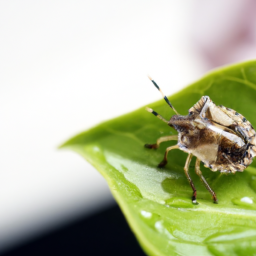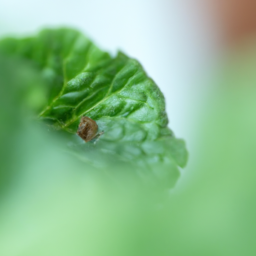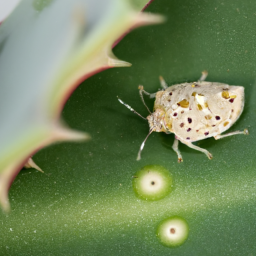
Hey there plant lovers! Are you struggling with pesky bugs wreaking havoc on your indoor plants? Well, you’re in the right place because in this blog post, we’re going to dive deep into the world of indoor plants bugs. Whether you’re a seasoned plant parent or just starting your green journey, dealing with bugs is a common issue that can be frustrating and challenging to tackle. But fear not, because we’ve got you covered with all the information, tips, and tricks you need to keep those bugs at bay and ensure your indoor plants thrive in a bug-free environment. So, let’s get started and bid farewell to those annoying indoor plants bugs once and for all!
Common Indoor Plant Pests: Identifying and Treating Bugs on Houseplants
Indoor plants are a great way to bring nature into your home and create a vibrant and soothing atmosphere. However, just like outdoor plants, indoor plants can also fall victim to various pests and bugs. These unwanted visitors can damage your plants, hinder their growth, and even spread to other plants in your home. In this guide, we will explore some of the most common indoor plant pests, how to identify them, and effective ways to treat and prevent infestations. Let’s dive in!
Identifying Indoor Plant Pests
Before we delve into the specific pests, it’s essential to understand the signs of a pest infestation on your houseplants. Look out for the following indicators:
1. Visible Bugs: Inspect the leaves, stems, and soil of your plants for any visible bugs. These can range from tiny insects to larger pests like spiders or caterpillars.
2. Leaf Damage: Check for irregular patterns of holes, notches, or discoloration on the leaves. Some pests feed on the foliage, leaving behind telltale signs of their presence.
3. Sticky Residue: If you notice a sticky or shiny substance on the leaves, it could be honeydew, a secretion left behind by sap-sucking insects like aphids or mealybugs.
4. Webbing: Spider mites are notorious for leaving fine, silky webs on the leaves and stems of plants. Look for these webs, especially in the crevices or undersides of the foliage.
Now that you know what to look for, let’s explore some of the most common indoor plant pests and how to deal with them effectively.
Aphids: The Tiny Sap-Suckers
Aphids are one of the most common pests you may encounter on your indoor plants. These small, soft-bodied insects feed on plant sap, causing leaves to curl, deform, or turn yellow. Here’s how you can tackle an aphid infestation:
1. Manual Removal: Wear gloves and gently wipe the affected leaves with a soft cloth or sponge soaked in soapy water. This will help remove aphids from the plant.
2. Water Spray: Use a gentle stream of water to rinse off aphids from the leaves. Remember to do this outdoors or in a sink to prevent the pests from spreading to other plants.
3. Insecticidal Soap: If the infestation persists, consider using an insecticidal soap specifically formulated for indoor plants. Follow the instructions carefully and apply it to the affected areas.
Remember to monitor your plants regularly and repeat the treatment if necessary to ensure complete elimination of aphids.
Mealybugs: The Cottony Invaders
Mealybugs are another common indoor plant pest that can wreak havoc on your beloved greenery. These small, soft-bodied insects are covered in a waxy, cotton-like substance and can quickly multiply. Here’s how to combat a mealybug infestation:
1. Isolation: As soon as you spot mealybugs, isolate the affected plant from others to prevent the infestation from spreading.
2. Manual Removal: Use a cotton swab dipped in rubbing alcohol to dab and remove individual mealybugs from the plant. Focus on the areas where they cluster, such as leaf axils and the undersides of leaves.
3. Neem Oil: Dilute neem oil according to the instructions on the product and spray it on the plant, ensuring thorough coverage. Neem oil works by suffocating and disrupting the life cycle of mealybugs.
4. Natural Predators: Introduce natural predators like ladybugs or lacewings, which feed on mealybugs, to help control the infestation. You can purchase these beneficial insects from garden centers.
Consistency is key when dealing with mealybugs, as they can quickly bounce back if not completely eradicated.
Spider Mites: The Invisible Weavers
Spider mites are tiny arachnids that can cause significant damage to your indoor plants. These pests are barely visible to the naked eye but can multiply rapidly under favorable conditions. Here’s how to tackle a spider mite infestation:
1. Pruning: Start by pruning and removing heavily infested leaves or stems. Dispose of the pruned material away from your other plants to prevent the mites from spreading.
2. Water Spray: Regularly mist your plants with water to increase humidity, as spider mites thrive in dry conditions. Make sure to target the undersides of leaves where the mites often reside.
3. Insecticidal Soap: Apply an insecticidal soap specifically formulated for spider mites. Thoroughly coat the affected areas, ensuring complete coverage of the pests.
4. Predatory Mites: Consider introducing predatory mites, such as Phytoseiulus persimilis, which feed on spider mites. These beneficial mites can be purchased from specialized suppliers.
Regular monitoring and consistent treatment are necessary to eliminate spider mites and prevent future infestations.
By becoming familiar with these common indoor plant pests and their treatment methods, you can safeguard your houseplants and ensure their healthy growth. Remember to maintain good plant hygiene, provide proper care, and regularly inspect your plants to catch any potential infestations early on. With a little effort and vigilance, you can enjoy a bug-free indoor garden that thrives with lush greenery and vibrant blooms!

Natural Remedies for Eliminating Bugs on Indoor Plants
Having indoor plants can bring life and beauty to your home, but unfortunately, they can also attract unwanted pests. Dealing with bugs on indoor plants can be a frustrating experience, but before you reach for harsh chemical insecticides, consider trying some natural remedies. Not only are these remedies effective, but they are also safe for both you and your plants. In this guide, we will explore some natural solutions to help you get rid of bugs on your indoor plants.
1. Neem Oil
Neem oil is a natural pesticide derived from the neem tree. It is effective against a wide range of pests, including aphids, mealybugs, spider mites, and whiteflies. To use neem oil, dilute it with water according to the instructions on the bottle and spray it directly on the affected plants. Make sure to cover both the upper and lower surfaces of the leaves, as well as the stems. Repeat this treatment every 7-10 days until the bugs are gone.
In addition to its insecticidal properties, neem oil also acts as a fungicide, helping to prevent fungal diseases on your plants. It is important to note that neem oil should not be used on plants that are in direct sunlight or under high temperatures, as it can cause leaf burn. Always read and follow the instructions on the neem oil product carefully.
Another way to use neem oil is by mixing it with liquid soap and water to create a soapy spray. This can be effective against soft-bodied insects like aphids and mealybugs. The soap helps to suffocate the bugs, while the neem oil acts as a repellent and disrupts their feeding and reproductive cycles.
2. Diatomaceous Earth
Diatomaceous earth is a natural, powdery substance made from the fossilized remains of diatoms, a type of algae. It is highly effective against crawling insects such as ants, cockroaches, and silverfish. Diatomaceous earth works by physically damaging the exoskeleton of the bugs, causing them to dehydrate and die.
To use diatomaceous earth, simply sprinkle a thin layer on the soil surface around the affected plants. You can also apply it directly on the leaves if the bugs are present there. Be sure to reapply after watering or if it gets washed away. It is important to use food-grade diatomaceous earth, as the one used for pool filtration can be harmful to humans and pets.
When using diatomaceous earth, it is crucial to wear a mask to avoid inhaling the fine particles. Additionally, keep in mind that it can be abrasive to the skin, so avoid direct contact if possible.
3. Sticky Traps
Sticky traps are a simple yet effective way to catch flying insects such as fungus gnats, fruit flies, and whiteflies. These traps consist of a sticky surface that insects get stuck to when they come in contact with it. You can either buy pre-made sticky traps or make your own by applying a sticky substance, such as petroleum jelly or adhesive tape, to a yellow or blue surface.
To use sticky traps, place them near the affected plants, making sure they are at the same height as the foliage. The bright color of the traps attracts flying insects, and once they land on the sticky surface, they are unable to escape. Regularly check and replace the traps as needed.
Sticky traps are a great tool for monitoring and controlling flying pests, but they may not be as effective against crawling insects. For crawling pests, consider using other methods mentioned in this guide.
By utilizing these natural remedies, you can effectively eliminate bugs on your indoor plants without resorting to harsh chemicals. Remember, prevention is key, so regularly inspect your plants for signs of pests and take action as soon as you notice any. With a little bit of care and attention, you can keep your indoor plants healthy and bug-free.

Preventing and Controlling Indoor Plant Insect Infestations
Indoor plants not only enhance the aesthetic appeal of our homes but also provide numerous health benefits. However, they can sometimes become vulnerable to insect infestations, which can harm their growth and overall health. In this guide, we will discuss effective methods to prevent and control indoor plant insect infestations, ensuring your plants thrive in a bug-free environment.
Understanding Common Indoor Plant Insect Pests
Before diving into prevention and control methods, it’s crucial to familiarize yourself with some common indoor plant insect pests. By understanding their characteristics and behavior, you can better protect your plants from potential infestations.
1. Fungus Gnats: These tiny flying insects are commonly found around houseplants. Fungus gnats thrive in moist soil and feed on decaying organic matter. While adult gnats are harmless, their larvae can damage plant roots, leading to stunted growth.
2. Spider Mites: Spider mites are tiny pests that are difficult to spot with the naked eye. They thrive in warm and dry conditions, sucking the sap from plant leaves, causing discoloration and leaf drop. Spider mites reproduce rapidly, making early detection and control crucial.
3. Mealybugs: Mealybugs are small, soft-bodied insects covered in a white, waxy substance. They feed on plant sap, causing yellowing and wilting of leaves. Mealybugs are often found in clusters, making them easier to identify.
Preventing Indoor Plant Insect Infestations
Prevention is key when it comes to managing indoor plant insect infestations. By implementing these proactive measures, you can significantly reduce the risk of pests invading your plants:
1. Choose Healthy Plants: Start by selecting healthy plants from reputable sources. Inspect them thoroughly for any signs of pests or diseases before bringing them home. Healthy plants have a better chance of resisting infestations.
2. Optimal Plant Placement: Different plants have varying light and humidity requirements. Ensure you place your indoor plants in suitable locations that meet their specific needs. Providing the right growing conditions helps strengthen plants, making them less susceptible to pests.
3. Regularly Inspect Plants: Regularly inspect your plants for any signs of pest activity. Look for discolored leaves, webbing, sticky residue, or tiny insects crawling on the foliage. Early detection can prevent infestations from spreading and causing extensive damage.
4. Maintain Cleanliness: Keep your indoor gardening area clean and tidy. Remove fallen leaves, debris, and dead plant material regularly. These can serve as breeding grounds for pests and increase the risk of infestations.
5. Quarantine New Plants: When introducing new plants to your indoor garden, quarantine them for a few weeks. This allows you to closely monitor them for any signs of pests before placing them near your existing plants.
Controlling Indoor Plant Insect Infestations
If despite your best efforts, your indoor plants become infested with insects, it’s essential to take immediate action to control the situation. Here are effective methods for combatting indoor plant insect infestations:
1. Natural Remedies: Many natural remedies can help eliminate indoor plant pests. For example, neem oil, derived from the neem tree, acts as an effective insecticide. Dilute neem oil according to the instructions and spray it on affected plants, targeting both the upper and lower leaf surfaces.
2. Insecticidal Soaps: Insecticidal soaps are another safe and effective option for controlling pests. These soaps work by disrupting the insects’ cell membranes, ultimately leading to their demise. Apply the soap solution to affected plants, ensuring thorough coverage of leaves and stems.
3. Biological Controls: Introducing beneficial insects, such as ladybugs or predatory mites, can help control indoor plant pests naturally. These beneficial insects feed on common pests like aphids, mealybugs, and spider mites, reducing their populations and preventing further damage.
4. Mechanical Control: For larger pests like caterpillars or beetles, manual removal is often the most effective method. Inspect your plants regularly and remove any visible pests by hand. Be sure to dispose of them properly to prevent reinfestation.
5. Consult a Professional: If the infestation becomes severe or persists despite your efforts, it may be necessary to seek professional assistance. Pest control experts can provide tailored solutions and treatments to eliminate the infestation effectively.
By following these prevention and control methods, you can ensure your indoor plants remain healthy and free from insect infestations. Remember, early detection and prompt action are crucial in managing pests and protecting your beloved plants.
In Summary
Indoor plants bring life and beauty to our homes, but sometimes they can also attract unwanted visitors: bugs. Dealing with indoor plant bugs can be frustrating, but fear not, there are effective ways to keep them at bay and ensure your green companions thrive.
One common pest that plagues indoor plants is the fungus gnat. These tiny flying insects lay their eggs in the moist soil of potted plants, and their larvae feed on the plant roots, stunting their growth. To combat these pests, it’s important to let the soil dry out between waterings, as fungus gnats thrive in damp conditions. Additionally, you can place yellow sticky traps near your plants to catch the adult gnats and prevent them from reproducing. If the infestation persists, consider using an organic insecticide specifically formulated for fungus gnats.
Another troublesome bug that can infest indoor plants is the spider mite. These minuscule pests love to feast on the leaves of plants, causing yellowing, speckled patterns, and eventually leaf drop. To control spider mites, regularly inspect your plants for any signs of infestation and act promptly. You can use a mixture of water and mild soap to wash away the mites from the leaves, or introduce natural predators like ladybugs or predatory mites to your indoor garden. Maintaining a humid environment can also deter spider mites, as they thrive in dry conditions.
Here are the top questions that we were asked:
Q1: What are some common bugs that can infest indoor plants?
A1: There are several common bugs that can infest indoor plants. Some of the most common ones include aphids, mealybugs, spider mites, fungus gnats, and scale insects. These bugs can cause damage to your plants by feeding on the leaves, stems, or roots, and can also introduce diseases.
Q2: How can I identify if my indoor plants have bugs?
A2: Identifying bugs on indoor plants can be done by closely inspecting the leaves, stems, and soil. Look for signs such as tiny crawling or flying insects, sticky residue on the leaves, yellowing or wilting leaves, small webs, or discoloration on the plant’s surface. You may also notice small holes or bite marks on the leaves.
Q3: How can I get rid of bugs on my indoor plants?
A3: Getting rid of bugs on indoor plants can be achieved through various methods. You can start by manually removing the bugs using a cotton swab dipped in rubbing alcohol or by spraying the plants with a mixture of water and mild soap. For severe infestations, you may need to use insecticidal sprays or systemic insecticides. It’s also important to isolate infested plants to prevent the bugs from spreading to others.
Q4: How can I prevent bugs from infesting my indoor plants?
A4: Preventing bugs from infesting indoor plants involves a few key steps. First, regularly inspect your plants for any signs of bugs or damage. Avoid overwatering your plants, as this can create a favorable environment for pests. Additionally, make sure to provide adequate air circulation and avoid overcrowding your plants. Quarantine new plants before introducing them to your existing collection to prevent introducing bugs.
Q5: Are there any natural remedies to control bugs on indoor plants?
A5: Yes, there are several natural remedies you can try to control bugs on indoor plants. Neem oil, for example, is a popular organic insecticide that can be diluted and sprayed on plants to repel and kill bugs. You can also use a mixture of water and dish soap or garlic spray to deter pests. Additionally, introducing beneficial insects like ladybugs or using sticky traps can help control bug populations naturally.

James Wong is a renowned ethnobotanist, plant scientist, and local television presenter. With a passion for demystifying plant science, he is known for translating complex botanical concepts into practical advice for everyday plant enthusiasts. James’s expertise spans from traditional gardening to cutting-edge plant technologies, making his insights accessible and informative.


